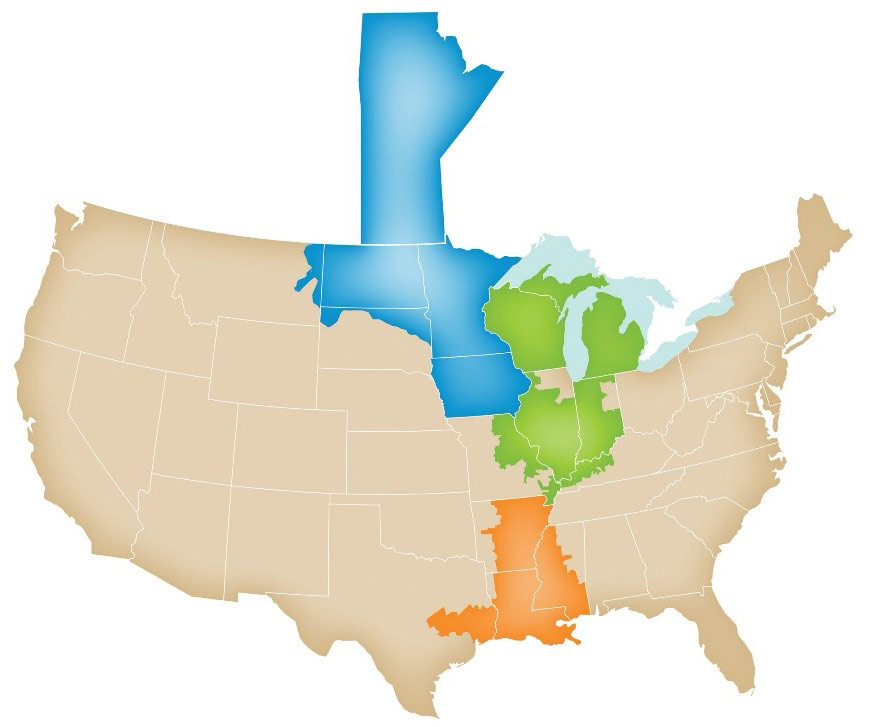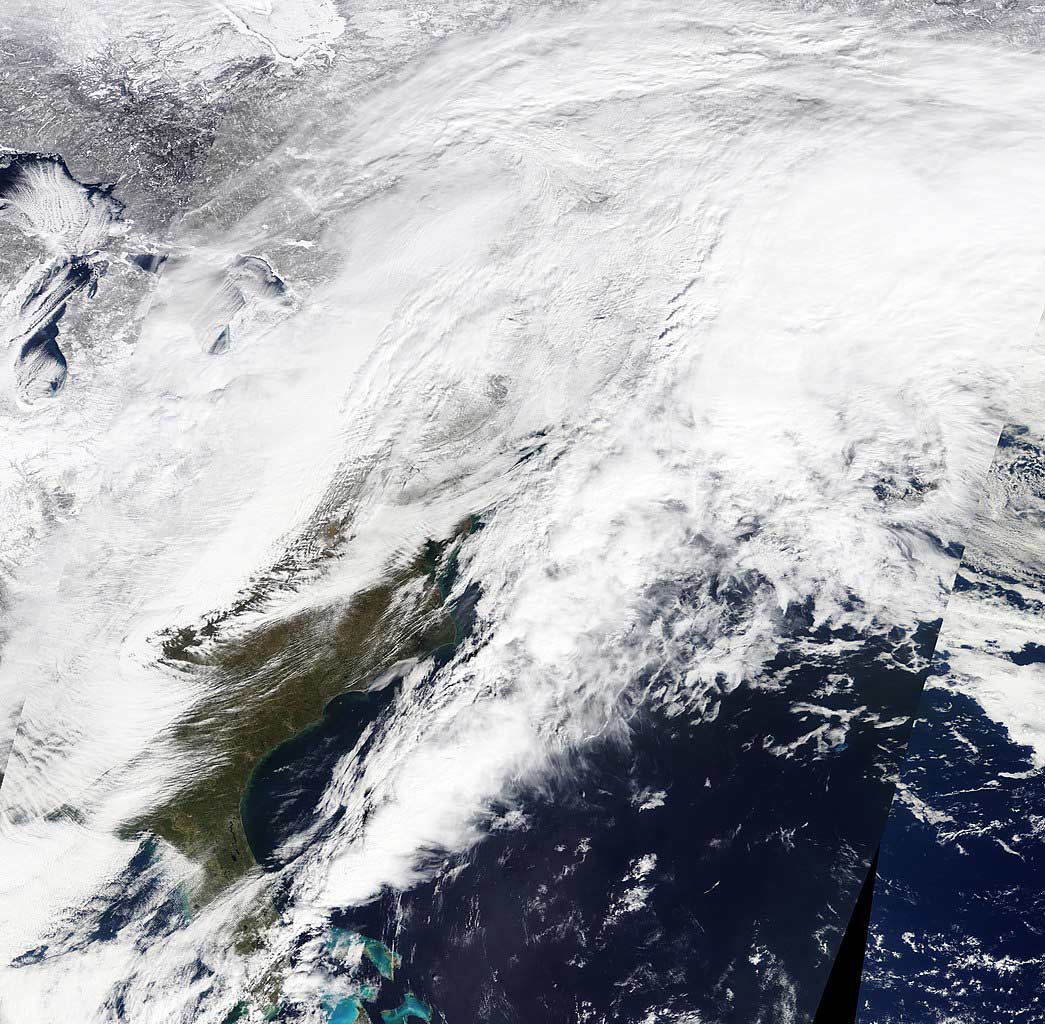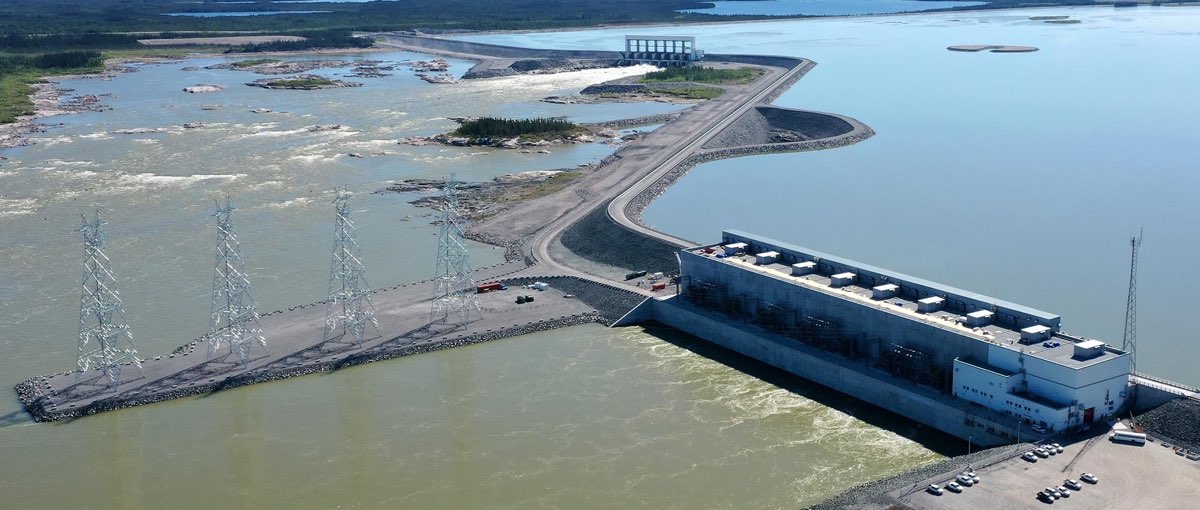Manitoba Hydro answers MISO call as extreme cold disrupts power across United States
On February 14, as lights began to go out in Arkansas, Louisiana, Mississippi and Texas, Manitoba Hydro suspended planned maintenance across our transmission, generation and high voltage, direct current (HVDC) system in response to an urgent call by the Mid-Continent Independent System Operator (MISO).
“We were responding to a Conservative Operations Declaration by MISO on February 14 after the winter weather forced generation outages and high load demand across the electricity system in the United States,” said Tom Tonner, Hydro’s System Control Centre manager.
“Basically, all of our maintenance on the bulk electric system – anything above 100 kilovolts – gets postponed unless the work is needed to maintain reliability or there’s absolutely no risk of impacting the overall system.”
MISO operates one of the world’s largest electricity markets across provinces and states – including some of the states hardest hit by the freak cold temperatures. Manitoba Hydro is a coordinating member of MISO.

MISO covers all or a portion of 15 states: Arkansas, Illinois, Indiana, Iowa, Kentucky, Louisiana, Michigan, Minnesota, Mississippi, Missouri, Montana, North Dakota, South Dakota, Texas and Wisconsin. Manitoba – the only Canadian province in the independent system operator – is a coordinating member of MISO.
While normally Manitoba Hydro has enough energy to conduct maintenance while supplying its domestic load as well as meeting its export commitments to utilities in other provinces and states, when the call came in from MISO, Manitoba Hydro’s experts made the call to halt planned maintenance and service. This enabled the utility to maximize generation and help respond to the strain on the U.S. energy grid.
To help reduce the strain, Manitoba Hydro even activated its thermal generating stations in Brandon, MB and Selkirk, MB, a last resort for a utility that prides itself on its virtually emissions-free operations.
“We had both Brandon combustion turbines and the Selkirk Generating Station running,” Tonner said. “While we were in our own winter demand peak, we were contributing what we could.”
When Conservative Operations took effect on February 14, Manitoba Hydro was supplying the United States with an average of 550 megawatts (MW), with peaks up to 1,000 MW.
Access to additional sources of electricity is one of the key benefits of transmission interconnections to other utilities and membership in a regional power pool such as MISO. If one member or a group of members is experiencing a capacity shortage because of a weather event or unforeseen equipment failure, they can turn to other members to make up that energy shortfall.
The benefit is mutual: Manitoba Hydro and its customers have benefitted from this relationship on a number of occasions. One of the most significant came in 1996, when a windstorm tore down 19 towers on the Bipole I and Bipole II HVDC lines just north of the Dorsey Converter Station. Cut off from more than 70 per cent of the province’s electricity generation, Manitoba Hydro turned to neighbouring utilities for the electricity needed to avoid blackouts.
“We are able to lean on MISO for emergency energy for a short period to give our Export Operations folks the critical time they need to set up purchases of imported electricity to get us out of the shortage,” Tonner said.
The recent situation proves the value of having robust interprovincial and cross-border interconnections between utilities in Canada and the U.S. that provide greater reliability and energy security for customers in both countries. The freak temperatures have also highlighted the ability and value of using non-emitting, renewable hydroelectric resources to backstop more intermittent supply options such as wind and solar, thereby reducing carbon emissions while helping to maintain a robust and reliable electrical grid across North America.

Massive winter storms like the one that pummeled the U.S. earlier this year can cause tremendous strain on power grids. Interconnections between utilities and across borders help mitigate the risk posed by these events.
Being interconnected to the larger regional power system provides real benefits – a fact that’s been well illustrated over the course of a cold snap that saw temperatures in Texas fall well below zero degrees and where a lack of interconnections has contributed to prolonged and widespread outages in that state.
“It’s certainly informative to see the struggles in Texas,” Tonner said. “They don’t have much connection to other states and have very limited transmission import capability. It’s created real challenges for their independent system operator when they have such significant generation shortfalls.”
The Feb. 14 MISO conservative operations declaration expired in late February.
